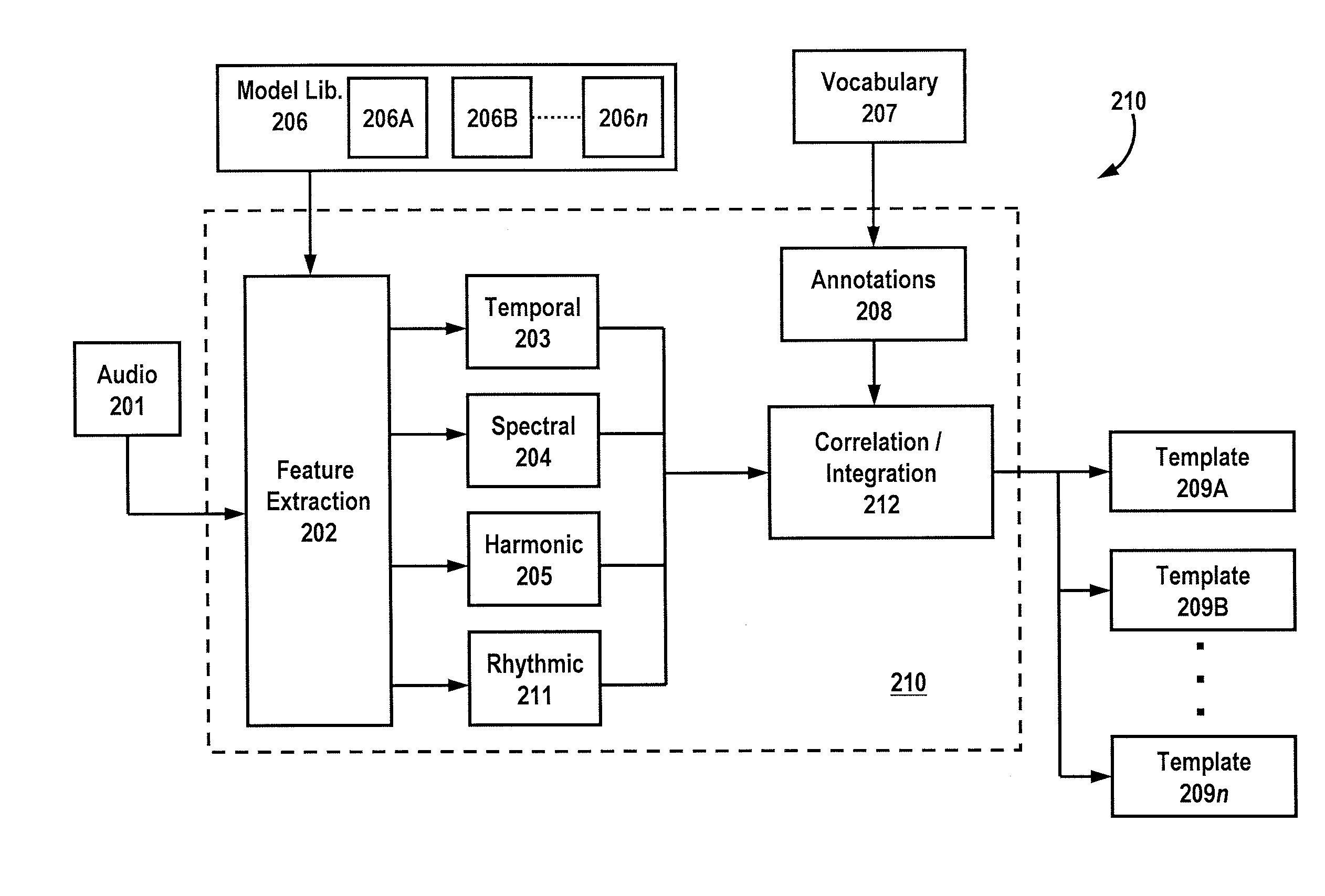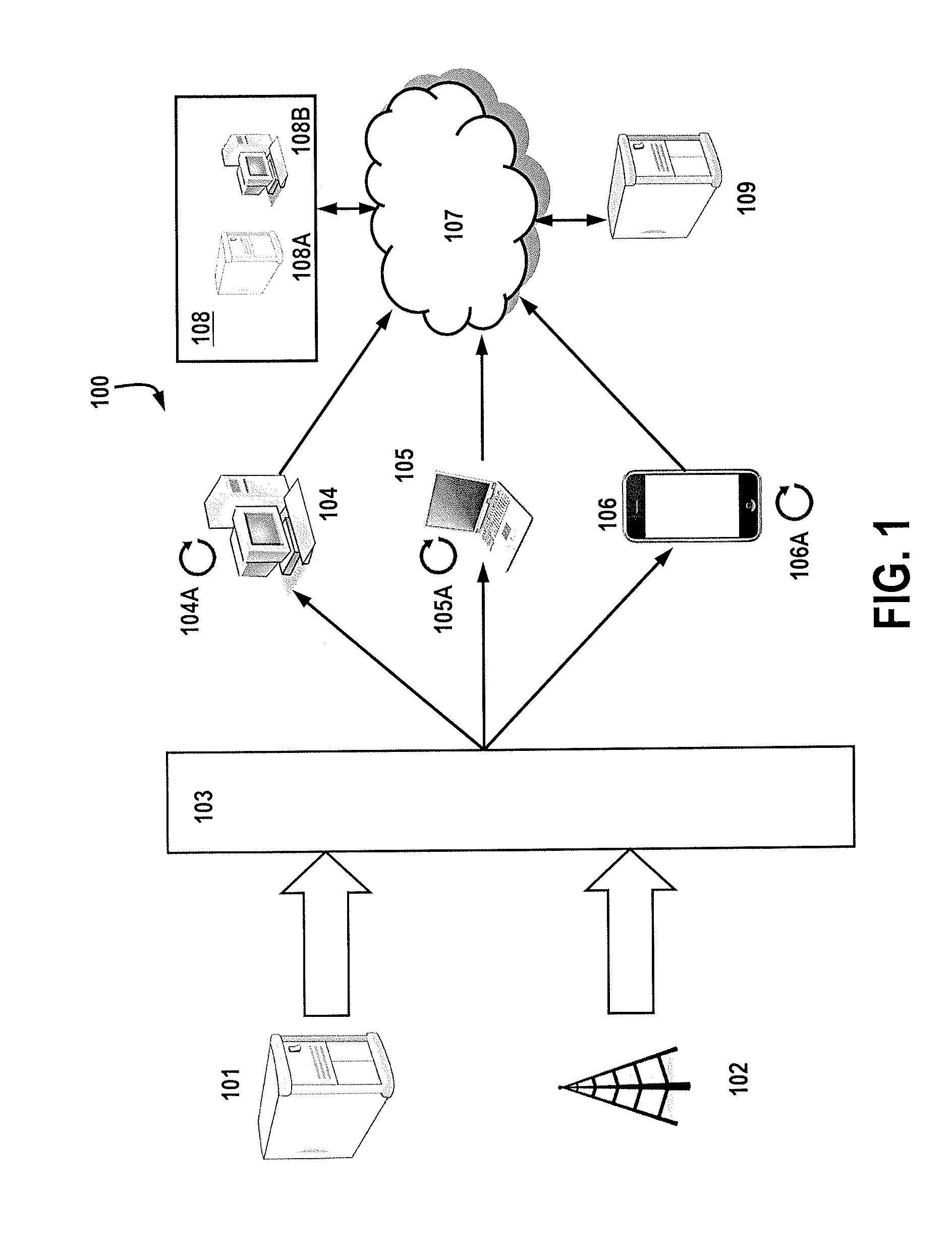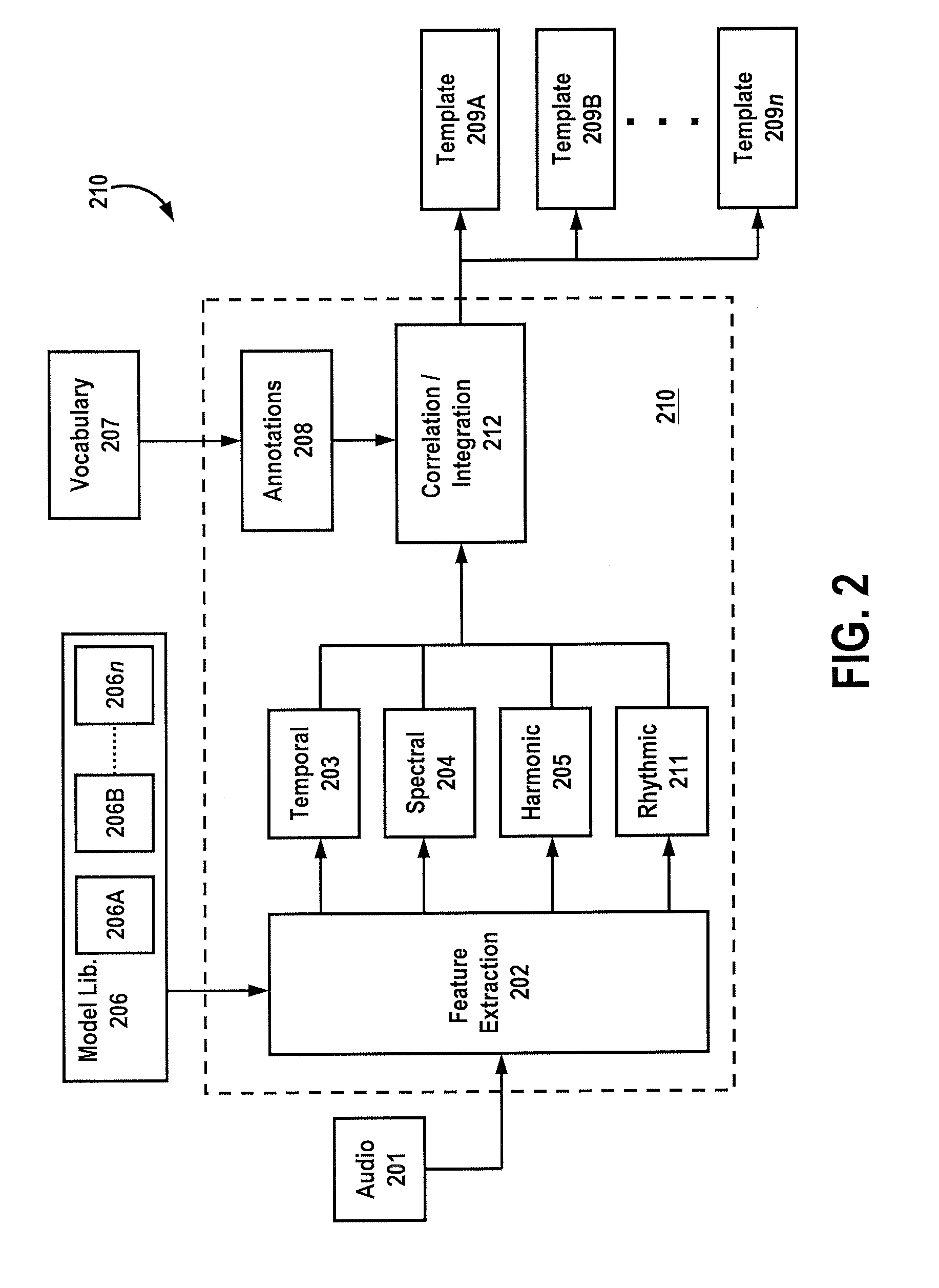Audio Processing Techniques for Semantic Audio Recognition and Report Generation
- Summary
- Abstract
- Description
- Claims
- Application Information
AI Technical Summary
Benefits of technology
Problems solved by technology
Method used
Image
Examples
Embodiment Construction
[0017]FIG. 1 is an exemplary block diagram for a system 100, wherein media is provided from a broadcast source 102 (e.g., television, radio, etc.) and / or a data source 101 (e.g., server, cloud, etc.). The media is communicated to a media distribution network 103, which has the ability to pass through the broadcast and / or data to remote users or subscribers. Such media distribution networks 103 are well known and may include broadcast stations, satellite / cable, routers, servers, and the like.
[0018]The media may be received at one or more locations using any of a number of devices, including a personal computer 104, laptop 105, and smart phone or tablet 106. It is understood by those skilled in the art that the present disclosure is not limited strictly to devices 104-106, but may include any device configured to receive and / or record media including set-top-boxes, IPTV boxes, personal people meters, and the like. Additionally, devices, such as 104-106 may be equipped with one or more...
PUM
 Login to View More
Login to View More Abstract
Description
Claims
Application Information
 Login to View More
Login to View More - R&D
- Intellectual Property
- Life Sciences
- Materials
- Tech Scout
- Unparalleled Data Quality
- Higher Quality Content
- 60% Fewer Hallucinations
Browse by: Latest US Patents, China's latest patents, Technical Efficacy Thesaurus, Application Domain, Technology Topic, Popular Technical Reports.
© 2025 PatSnap. All rights reserved.Legal|Privacy policy|Modern Slavery Act Transparency Statement|Sitemap|About US| Contact US: help@patsnap.com



